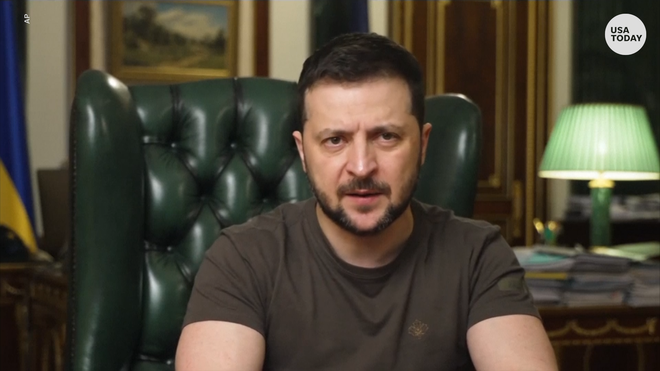WASHINGTON – President Joe Biden said Tuesday his administration would send advanced, long-range rocket systems to Ukraine to combat Russian forces, even as he vowed the U.S. has no intention of trying to oust Russian President Vladimir Putin.
In perhaps the clearest statement yet of America’s role in the war, Biden promised more advanced weaponry and financial assistance for Ukraine and deeper isolation for Russia. But in a New York Times op-ed, Biden also spelled out what the U.S. will not do.
“As much as I disagree with Mr. Putin, and find his actions an outrage, the United States will not try to bring about his ouster in Moscow,” the president wrote. “We do not seek a war between NATO and Russia.”
The op-ed landed as the White House agreed to send precision-strike, long-range weapons systems to Ukraine – something the country’s leaders have been pleading for amid Russia’s escalating attacks in the eastern part of the country. Those weapons would be part of a new $700 million security package that will be formally announced on Wednesday.
Biden’s op-ed comes a day after he said the U.S. was not going “to send to Ukraine rocket systems that can strike into Russia.”
Senior administration officials, speaking on the condition of anonymity, said Tuesday the U.S. would be sending HIMARS (High Mobility Rocket Systems) to Ukraine. The officials said in a call with reporters that Ukrainian officials assured the United States the rockets would only be used to repel Russian forces in Ukraine and not to attack Russian territory.
“We are not encouraging or enabling Ukraine to strike beyond its borders,” Biden wrote in the op-ed. “We do not want to prolong the war just to inflict pain on Russia.”
The senior administration officials said the Pentagon would also provide air surveillance radars, additional javelins, as well as anti-armor weapons. The HIMARS rocket system has a range of about 70 kilometers or roughly 43 miles, according to the Pentagon. This is the eleventh security package that the Biden administration has sent to Ukraine.
Biden and his advisers have sometimes sent mixed messages about America’s aims as it seeks to help Ukraine defend itself from Russia’s invasion.
Biden raised eyebrows in March during a trip to Poland when he said Putin “cannot remain in power,” which appeared to suggest he supported the Russian leader’s ouster. White House aides scrambled to clarify the president’s comments, saying the administration did not have a strategy of regime change in Russia.
In April, Defense Secretary Lloyd Austin said the United States wanted to see Russia “weakened to the degree that it can’t do the kinds of things that it has done in invading Ukraine.” Other Biden advisers have since declined to clarify those remarks.
In Tuesday’s op-ed, Biden reiterated his commitment to not send American troops to fight in Ukraine or to attack Russian forces – as long as the United States and members of the NATO alliance are not attacked.
“America’s goal is straightforward: We want to see a democratic, independent, sovereign and prosperous Ukraine with the means to deter and defend itself against further aggression,” Biden wrote.
“So long as the United States or our allies are not attacked, we will not be directly engaged in this conflict, either by sending American troops to fight in Ukraine or by attacking Russian forces,” the president wrote.
Live Ukraine updates:EU leaders agree to partial ban of Russian oil; US won’t provide missiles capable of striking Russia
USA TODAY ON TELEGRAM:Join our Russia-Ukraine war channel to receive updates straight to your phone.
Biden said the new long-range weapons and munitions would help the Ukrainian forces “to more precisely strike key targets on the battlefield in Ukraine.” And he said the U.S. would continue to work with its allies to isolate Russia politically and economically.
The United States committed to sending an additional $40 billion in support to Ukraine after Congress passed a bipartisan aid package in mid-May.
The package, which Biden signed on a plane during his trip to Asia earlier this month, is intended to get Ukraine through September as the Russian invasion approaches its fourth month.
The aid package included more than $20 billion for the Pentagon to provide weapons, intelligence and training, and nearly $14 billion for the State Department for food aid, refugee assistance and other diplomatic programs.
Contributing: Jeanine Santucci and Ella Lee
Reach Rebecca Morin at Twitter @RebeccaMorin_




